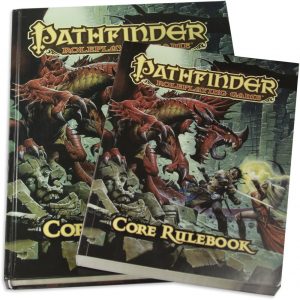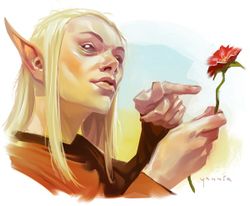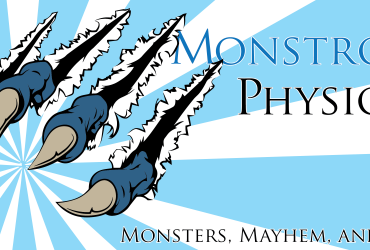Helping new GMs gain confidence and feel comfortable running games is one of my goals for this blog. The last few months has been a social minefield though and our community has needed some support that I felt I needed to provide. This week though, I am going to write with the new GM in mind. The astute observer will note the “Part 1” at the end of this month’s blog title, implying I think I will write about this again. Or it is there as a tease. You can never tell with me. My plan is for this to be an ongoing exploration of resources that are available to GMs and designers (and players, if they are curious), where to find them, and how to utilize them. You may have played Pathfinder for years and now you’re ready to take that next step. It can be exciting to run a game, I want to make sure it’s not terrifying and confusing too. This is all prefaced with the caveat that I am new to this too or at least not so experienced as to pretend to be an expert.
As I have mentioned before, I have been on “this” side of the table for just about two years. Prior to RPG Superstar 2015, I only ever played Pathfinder. Then I entered the contest and my crash course in game design required me to hit the ground running full tilt, 40+ hours a week working on learning game design the Pathfinder way. It was hard and intense, but fortunately for you, dear reader, you don’t have to do it that way, you can take your time. Unless you want to learn Pathfinder Survival Style, but I do not recommend that method, sleep is not overrated.
Full disclosure here – I am the 2015 Paizo RPG Superstar, I have received money for freelance material written for and published by Paizo. I am not an employee of Paizo and certainly anything I say here is my opinion and meant for the educational purposes, if anything I say here is inaccurate or incorrect (which is always a possibility), please drop me an email or comment.
Here at Know Direction, we focus on the Pathfinder system. This series is going to be Pathfinder heavy, but I hope to be able to inject some universal information and thought processes to help new GMs out in any gaming system. If you have questions or suggestions, post them in the comments or send us an email at KnowDirection@hotmail.com.
CORE RULEBOOK: THE GM’S FIRST RESOURCE
The good news is, you probably own the first and most important book you’re ever going to need – The Pathfinder Roleplaying Game Core Rulebook, also known as CRB. CRB has just about everything you need to run a Pathfinder game: character creation rules, mundane equipment, spells, magic items, prestige classes, and basic rules for combat encounters. The better news is, if you don’t have your CRB handy, Paizo has put much of the open gaming online at Pathfinder Reference Document or PRD. The PRD only contains parts of Pathfinder books due to Paizo’s use of Wizards of the Coast’s Open Gaming License (OGL) for Dungeons and Dragons 3rd Ed, that is nice to know information, but not necessary to understand how to run Pathfinder at this time. If you run into an issue of rules in conflict between your CRB and the PRD, check the edition of your hard copy, chances are you’ve got an earlier edition. Errata are also available online.
There is also a fairly dense section in the back that starts at roughly page 400 entitled “Gamemastering”. This was a mysterious place in the book that I never ventured. My preferred method of playing goes something like this: I am forced to make a PC, I do so without a lot of deep thinking on the background but find some small seed I build off of, I play in the game and along the way discover both the setting and my PC because I failed to research either in advance. It’s a terrible way to create PCs, but I just don’t have the time or energy to think about the PCs I’d like to portray in advance in many cases. Discovering the Gamemastering section of CRB pretty much blew my mind.
Pathfinder is a moderate to heavy rule based system. I knew there were rules for almost everything from my playing experience. It is worth noting here that the rules are an agreement between the players, GMs, and designers about how the world works. If one of the partners of the relationship doesn’t follow the rules that can really muck with things. It may negate trust you have earned as a GM and that trust is hard to earn back. As a designer or GM, it is important to follow the rules to the best of your ability to maintain your setting. For GMs, however, bending or changing the rules to help things run better at a specific time and setting may be appropriate to facilitate fun at your table. For example, if you’re running a printed AP and the solution to a problem calls for a divine spell caster, but the party doesn’t have one, holding out for a divine spell caster on the spot simply isn’t going to happen. You’re going to have to figure out a work around. That’s part of what I hope to help you figure out how to do in the next few months. Back to the CRB.
The Gamemastery section begins by talking about published adventures and how to design encounters and build adventures from scratch. The subsequent chapters include rules for building traps, environmental terrain, weather and how to quantify it, how to build NPCs and magic items.
As a new GM, this can be incredibly overwhelming. I know I was overwhelmed. Perhaps the best part about participating in RPG Superstar was that the contest gave me an opportunity to learn the parts in small but increasingly larger chunks. So again, I recommend starting with a Pathfinder Society (PFS) scenario for low level PCs. PFS scenarios usually consist of 2-3 encounters, they can be run in 3-5 hours depending on the group, and they encapsulate all the core elements of an adventure in a less intimidating size for a new GM. Print it off, read it, take notes on your hard copy as you read through, and then read it more than once. Keep your CRB close at hand or have the PRD open to reference terms, spells, or feats that you’re unclear on and take notes on those things as well.
Since CRB has magic item and NPC creation rules in it, take the time to look over how professionally prepared gaming material it put together. Check out the math, see where the wiggle room is for future reference. I will refer back to this frequently – the rules are rules, but they’re also guidelines. You can push the envelope in one spot if you really need to, but the other pieces need to be solidly in line with the creation formula for power balance. Basically, try to color within the lines for the most part. Things really spin out of control when you break more than one rule at the same time without a firm feel for where boundaries are and the creature/monster/NPC jumps CR (challenge rating) and you aren’t even aware of it, you TPK your friends’ PCs and leave a sense of “me vs. them”.
There will be monsters and NPCs, which have stat blocks – which are essentially the character sheets for those creatures (a general term we use for things that PCs encounter). There is great forum support for PFS GMs, some of the GMs post their personal cheat sheets, which I like to use to help keep my creatures and items handy and easily accessible free from my printed copy of the PFS.
Don’t be afraid to make mistakes or ask questions, no one expects a new GM to get it right the first, second, or even thirteenth time. We all make mistakes, it happens. Learning from our mistakes is what makes us better.
The next resources we’ll look at are the bestiaries. You can’t have an adventure without monsters. If you haven’t already been following all the other blogs on the Know Direction network, there are many blogs written about creating monsters, such as Luis Losa’s “Monstrous Physique”. Heck, we might even make a monster here next blog. Nah, let’s not get silly, we will be looking at the process of making a monster.
As a note, the next scheduled Inspire Confidence lands the week between Christmas and New Year’s Eve. I will be taking that week off to be with friends and family, have a wonderful holiday season. See you all in 2017!








